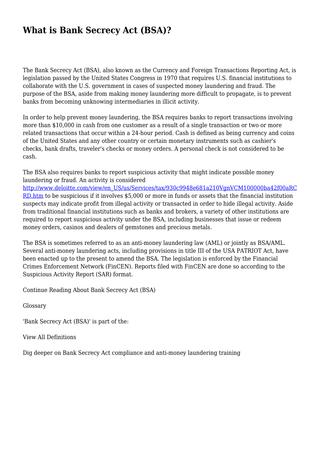What is FTE?
by crayons
Contents:


You can take the average number of hours spent by part-time employees per week and not make separate calculations every week. Still, in this case, it’s more reasonable to take some bigger periods, let’s say, 90-day or 120-day periods, during which you can take the average number of hours spent by part-time employees. Such calculations have to be made every week throughout the year. If the employees work the same number of hours every week (especially part-time employees), the FTE will be the same every week. But if the number of working hours is a variable component, if you hire new people to your company, the calculations will be more complex, and the total FTE will vary from week to week. Full-time equivalent is the number of working hours spent by one full-time employee during a fixed period, which may be one week, one month, or, for example, one year.
This method debit memos how many full-time employees are working in the company. The FTE acronym stands for “full-time equivalent.” It is a unit, which shows the workload of a person, and whether they are considered full-time or part-time. FTE has various business purposes, from calculating how many full-time employees a business has, to calculating payroll and taxes, to making hiring decisions and even applying for PPP . Several federal programs in the United States—such as the Paycheck Protection Program —use FTE to determine employer eligibility.
This is for ease of calculating the cost — in time, money, and personnel — of a project, since it standardizes the measurements. What’s important is that “on average” they work under 30 hours a week. To get a good estimate, it’s best to average hours over a 90- or 120-day timeframe.
What Constitutes a Full-Time Employee under the Affordable Care Act (ACA)?
To https://1investing.in/ the total FTE, add the number of FTEs worked by full-time employees (1 FTE for each full-time worker) to the part-time FTE you calculated in step five. Next, add the total hours worked by full-time employees and the total part-time hours worked by part-time employees. Instead, it focuses on the number of people working on your projects, whether they are full time employees, part time employees, contractors, interns, students, freelancers, advisors, etc.
The ACA establishes that full-time employees are the number of employees who, for a calendar month, averages at least 30 hours per week or 130 hours of work per month. For example, if Jane works 35 hours a week, or 140 hours in a month, she would be considered a full-time employee. Conversely, consider a business that has two employees working 60 hours a week each. When the company calculates their FTE, they realize their two employees are the equivalent of three full-time workers.
Step 1. List all of your employees and hours worked
This calculation provides a convenient way to quantify how many theoretically “whole” full-time employees are on the company payroll, even if the majority of your workforce is actually part time. To calculate FTEs and see if you qualify for tax credit, you can choose one of the said methods (we’ve provided calculators for each). If you, for instance, choose the first method, enter all the actual hours worked and divide that number with 2,080 to get the final FTE. To help you determine if you are eligible for a small-employer healthcare tax credit, you need to count the number of employees employed in your company throughout the year. If you are such an employer, then you are eligible to apply for a tax credit in the amount of 50% of employer-paid health care premiums. The calculation is straightforward — divide the employee’s scheduled hours by the number of hours that represent an official weekly full-time schedule in a company (e.g., 40 hours per week).
- Let’s say you determine that 1 FTE equals 40 hours of work per week.
- To calculate the FTE metric, find the average number of FTEs per month from two different time periods .
- To do this, multiply the number of weeks in a year with the number of hours for a full-time position.
- If you’re trying to determine who is full time and part time for ACA purposes, use 30 hours per week as the criteria for a full-time employee.
In addition, if you’re calculating FTE for ACA purposes, you’d only include the part-time person in your calculations if they worked 120 days or more per year. In our example, Jimmy and Marta would be considered part-time employees. The FTE also determines any business as an applicable large employer . FTE goes even further than solely calculating project or staffing needs. If you employ 50 or more full-time equivalent employees then you are required to offer health benefits and coverage. FTE is also calculated to see whether or not you qualify for any tax credits.
Who qualifies as an FTE employee?
Outside the business environment, this unit of measure is also used to measure a student’s class load or involvement in a school project. FTE refers to one full-time employee or the equivalent of a full-time employee. To qualify for PPP loan forgiveness an organization must have maintained the same level of FTE employees during certain specified time periods following the loan disbursement. If you’re offering health coverage to remote workers, there may be some additional considerations.

Back to our sample company ABC, employee Gina works 0.25 times the amount of a full-time employee. Her boss may use that as the basis for the salary negotiations. On the other hand, employee Janet works 1.25 times the amount of a full-time employee and may receive a higher salary than 1.0 employee. Determine how many hours an employee works in a year by multiplying the number of hours they work in a day, by the number of days they work a week, by the number of weeks they work a year. Remember to deduct any allotted holidays, vacation and sick days from the total number of hours working in a year. For our examples, we are allotting four weeks total time off a year, bringing the number of working weeks down from 52 to 48.
In this case, you can use this calculation method as a general guide but should also consider the possible limitations. This rate is known as the affordability threshold and is typically adjusted every year to account for changes in market conditions, healthcare premium growth, and the American economy. Another key provision in the ACA states that all ALEs must offer a health insurance plan that qualifies as minimum essential coverage , otherwise known as the employer mandate. To calculate a salary based on the FTE hours, take the salary of a full-time employee and multiply it by the FTE of the employee.
Salaried employees who work full time or are expected to work a full-time schedule (even if they don’t report their actual hours each week) are considered full-time employees in both cases. Some labor laws and employee benefit programs are linked to how many employees a company has on its payroll. To ensure that a company with 100 part-time employees is treated as fairly as one with 50 full-time employees, an FTE is calculated to compare both workforces. The FTE salary is an employee’s salary converted into a full-time equivalent wage within the year. The actual number of working hours spent by an employee is not considered in these calculations.
Various combinations can be created depending on the needs of the business. You can also use an FTE calculation to determine the appropriate pay for part-time workers. To identify the FTE for a specific part-time position, just divide the number of hours worked by the employee by the number of hours considered for a full-time worker.
A seasonal worker is simply defined as employees who perform labor or service on a seasonal basis, such as retail workers during the holiday season. If the total is at least 50, the employer is an ALE and is required to offer health insurance to all qualifying employees. Employee’s total hours worked divided by the number of compensable hours in a full-time schedule during a fiscal year. The Full-Time Equivalent is the number of hours a business considers a full-time employee to work.

Benefits like paid time off and maternity/paternity leave are all included within the number of hours worked, so don’t worry about accounting for these hours. Divide the total hours worked by all of your employees by the number of available full-time hours in a year . This gives you the total number of hours worked by all of your employees. The 2,080 figure can be called into question, since it does not include any deductions for holidays, vacation time, sick time, and so forth.

The full-time equivalent converts the hours worked by part-time employees into hours worked by full-time employees. Divided by the standard 40-hour work week, this would be equal to 2.5 FTEs— so you know that you will need two full-time workers and one part-time worker, or another combination of workers that adds up to 2.5 FTEs. Imagine you are a human capital manager who has lost four employees and needs to replace their hours. Two of these employees worked full-time hours , employee three worked 20 hours per week, and employee four worked 15 hours per week.
- It allows companies to standardize salaries by finding an equivalent salary between the part-time and those working full-time.
- You can work out the Full-Time Equivalent by dividing an employee’s scheduled hours by the employer’s hours for a full-time workweek.
- The actual PTO an employee can accrue may depend on several factors, including years of employment that dictate an employee’s hourly PTO accrual rate.
- In other words, it allows you to compare different types of staffing arrangements on a level playing field.
- Monique Danao is a journalist and freelance writer who has worked with several startups and tech companies.
For example, an employee who works a full-time, 40-hour week would equal 1.0 FTE. As would four part-time employees who each work 10-hours per week, totaling 40 hours. You can calculate FTE to determine how much a project will cost in terms of time and personnel needs. For part-time employees — Employees who worked less than 40 hours per week on average during a specific calculation period will have their average hours worked on a weekly basis added together. Divide this total number by 40, and then round the total to the nearest tenth to get the total FTE.
This requires a lot of planning and preparation work, and here is where project managers shall calculate FTE and use this data. This means that all company employees (both full-time and part-time) spent 200 working hours together. Let’s say, in the 19th century people used to work much more than now, at least hours per week . The paycheck protection program or PPP is a scheme rolled out by the government to encourage companies to keep workers on their payroll. To claim PPP, you may need to keep a PPP chart for the scheme’s duration to show your employee retention.
